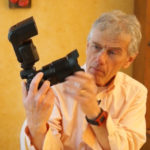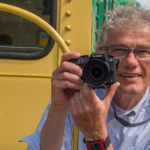I was eagerly anticipating my ability to borrow the Sony A7S-2 for review, and it luckily coincided with a winter holiday trip to the Dominican Republic.
Here’s a link to check the price at B&H
Alpha a7S II Mirrorless Digital Camera (Body Only)
Here are some behind the scenes notes:
In the Dominican, we stayed at Viva Wyndham V Heavens, a resort that had recently opened and was still suffering from some growing pains. If you’re interested, I wrote a full report on tripadvisor. Bottom line: it’s not the 4.5 star resort that Sunwing promised.
I do, of course, enjoy shooting camera reviews and didn’t want it to interfere too much with enjoying the time off. I certainly appreciate Kim and Calla’s cooperation.
If you’re looking for information about adjusting the picture profile and gamma settings, I learned a lot from this video by Alister Chapman. Sony’s online guide is also useful at a high level. Searching for Alister and the Sony FS5 camera will show lots of links.
This video is produced and uploaded as 4K. The scenes that were shot in HD (1920) and up-rezzed are indicated. That includes the on-camera scenes (shot with the Canon T6S – also reviewed on our trip) and the Shogun screen captures. Note that the on-camera scenes in the T6S review were recorded with the A7S-2.
I’m most thankful to Sony for the loan of the camera, the monitor and three full frame lenses. This review was shot with the 24-70, the 28-135 cinema lens and the 35mm F1.4. For stills, I primarily used the 24-70, for video the 28-135 (although it does add substantial weight and makes me a little more cautious when I shoot with it.)
I used a Manfrotto 190/701 tripod. My on-camera scenes were recording using the Parrot iPhone teleprompter with Teleprompt+ 3. Scripts are written primarily in Microsoft OneNote, a product I recommend.
The images used in the review are available on flickr, if you’d like to check the EXIF settings data.
Tony Dobrovsky at DSC Labs Canada very generously provided the XYLA dynamic range evaluation device, as well as the Chroma duMonde chart and the Chroma-Selfie card. They’re very useful to help demonstrate advanced video controls like Slog settings.
Audio Distributors International loaned me the Rode VideoMic Pro and the RodeLink Filmmaker kit. I liked the RodeLink so much I bought one after the review was over, replacing my Sennheiser ex100 set. It is a great deal easier to use, and to my ears, the quality is better.
Most screen captures (and a few video scenes in the final production) are recorded using an Atomos Shogun. Sadly, as noted in the video, although the A7S-2 does output 4K, it provides menu and overlay output only on 1080 output.
Screen captures for images that included elements not available on the HDMI output were recorded using a Sony A6000, which is also used for the shots of the camera and the detail of its controls. I used both the Sony Zeiss 16-70 and the 30mm macro lenses.
As always, screen captures are edited, slowed and speeded up to dance with the words, so are not representative of the actual time represented activities may take.
My voice overs are recorded using a Rode NT-USB. I edit with Final Cut 10.2.2/3, and used it for the colour grading.
If you have questions and comments, please use the form below – I do reply to all.




